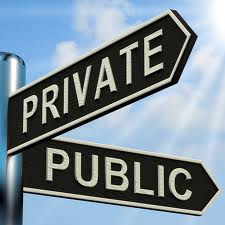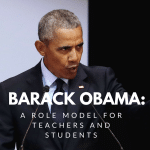This article is published simultaneously with its partner article, “What Frustrates Me about Non-Public Schools.”
 As a teacher who will never say “I’ve seen or heard it all,” I have become disenchanted with public schools, especially in Oklahoma. I feel that our schools, overall, do a severe injustice to our students by not providing them with the education they deserve, and by not following through with what we have guaranteed our children: ‘an environment where every child should have the ability to learn.’ When looking at other states, such as Connecticut and Massachusetts where learning is approached as a shrine of sorts, I have to shake my head and allow my shoulders to sag with defeat. When I look at the United States against the back splash of other countries, the colors are very dull in comparison to those who truly appreciate the ability to learn, and more so, respect the ability to teach.
As a teacher who will never say “I’ve seen or heard it all,” I have become disenchanted with public schools, especially in Oklahoma. I feel that our schools, overall, do a severe injustice to our students by not providing them with the education they deserve, and by not following through with what we have guaranteed our children: ‘an environment where every child should have the ability to learn.’ When looking at other states, such as Connecticut and Massachusetts where learning is approached as a shrine of sorts, I have to shake my head and allow my shoulders to sag with defeat. When I look at the United States against the back splash of other countries, the colors are very dull in comparison to those who truly appreciate the ability to learn, and more so, respect the ability to teach.
And playing the blame game does no good. I mean, when we continue to sink as a state in our educational system, and a country overall, does it really matter whom we point the finger at? It doesn’t ‘fix’ anything, and our children still suffer.
The following are just a few of the beefs I have with our public school system. And as far as ‘fixes’ go for the challenges I see, it would take a huge shovel to dig us out of the muck we are in, and even then I think that most of the powers that be wouldn’t swallow the pride that plagues them long enough to actually realize the damage that is being done to our children.
I feel that public schools…
- Take the learning out of education. There is a huge difference between education and learning. Giving students the bare minimum doesn’t constitute learning, at least not in my book. True learning happens when prior knowledge is built upon and students seek to find out more about what is being taught. Public schools for the most part are dealing with such large amounts of students that it is difficult to assess how much actual learning is happening. Most schools approach education in a feed and purge method. In my experience, if whatever is being taught can’t be measured by a test, then it doesn’t matter.
- Have a “money makes-and breaks-the system” attitude. If you want a multi-million dollar athletic facility instead of textbooks then you go to the powers that be in the public school systems. Monies are misappropriated in large amounts all the time depending on what the PUBLIC thinks is necessary, not what the actual needs are. Teachers are having to purchase their own supplies for classrooms, but you can bet the football team has new jerseys and plenty of equipment.
- Are too large. In Oklahoma, class sizes in public schools can reach 30 plus at the high school level, depending on the district and 20 plus at the elementary level. The more kids you can cram into a classroom, the fewer teachers the district has to hire. Money per capita for students doesn’t change.
- Views making the grade doesn’t mean making the cut. Students can receive A’s and B’s on report cards, but not be passed on to the next grade level based on test scores. And guess what? If a student repeats a grade level, the school systems still get money per capita for the student, the teacher still gets paid for teaching the student, but the student and the student’s family suffers, even though by all stretches of the imagination the student was doing ‘fine.’
- Have major inconsistencies between school systems and districts. In order for schools throughout the United States to be successful, one would think they would all need to follow the same requirements; requirements which should pour down from the US Department of Education. But that’s not the way it works. As long as minimum requirements are met, individual districts can determine into what detail objectives are taught, leaving major inconsistencies between not only states, but also districts within particular states and even schools within districts. We have several districts in Oklahoma that are considered below par, but even within the districts that are considered to be among the best, you’ll find certain schools that rank equivalent to those districts that are below par.
- Accept a lack of personal involvement with students, unless the students seek it out themselves. With large class sizes comes the inability to develop meaningful relationships with each student, especially for those grades that don’t stay with the same teacher all day. The more students a teacher has in a class, the more difficult it is to have personal relationships with each student, unless the student is seeking out the relationship.
- Counselors have had to take on the role of vice principals instead of counseling. Counselors used to be able to do just that-counsel. If a student was having difficulty at home or in class, the counselor could step in and help figure out what steps needed to be taken to help the student be successful, and keep following up with that student. On the same hand as high school students approached graduation, counselors could meet with them and point out scholarships and suggest colleges, and once again, follow up with the students. Unfortunately very few counselors get to actual ‘counsel’ today’s students. Most counselors nowadays have been put into a vice principal’s role; disciplining students, filling out paperwork and attending meetings. Very few schools have ‘guidance counselors’ who can assist students with life decisions or struggles.
I would love to hear how public schools work in your state.




